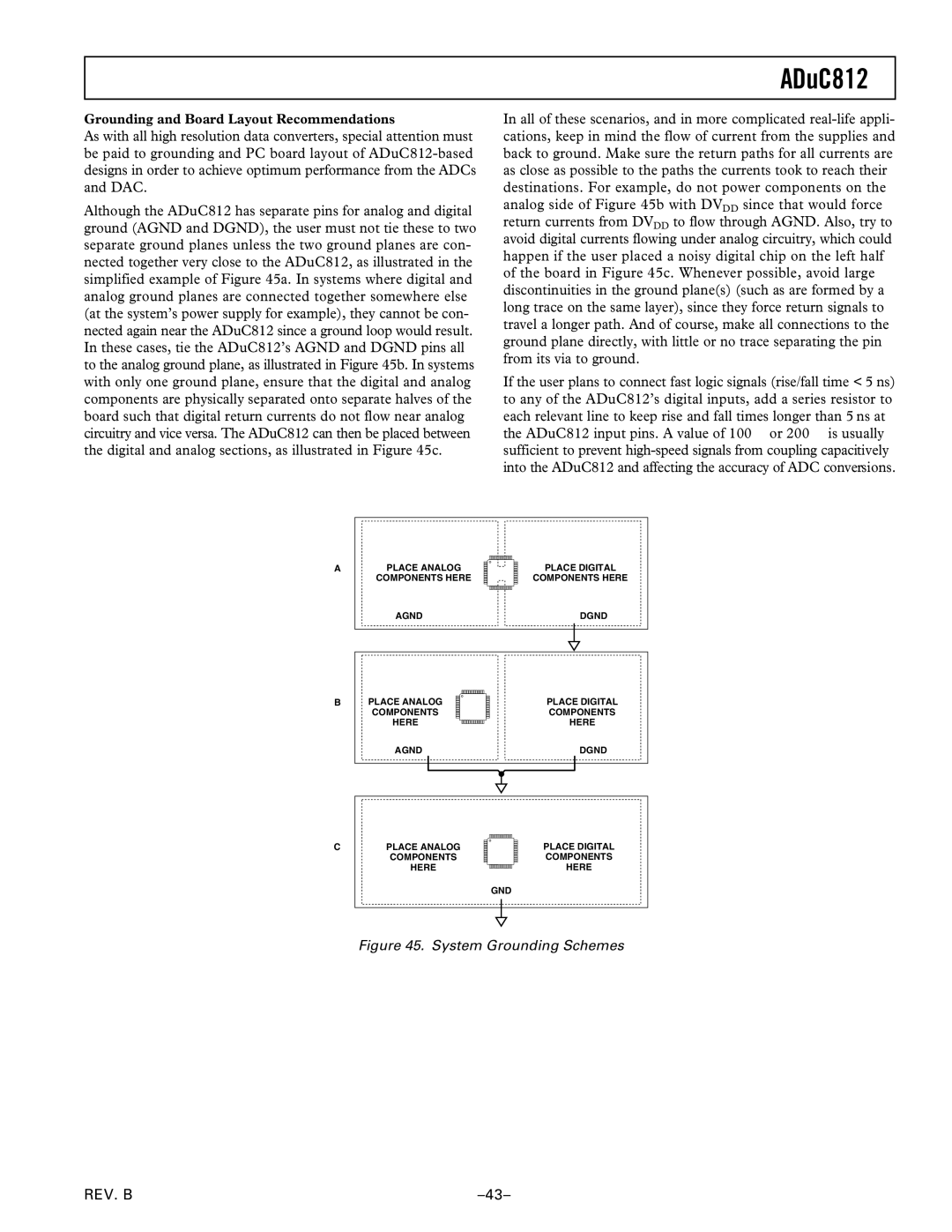
ADuC812
Grounding and Board Layout Recommendations
As with all high resolution data converters, special attention must be paid to grounding and PC board layout of
Although the ADuC812 has separate pins for analog and digital ground (AGND and DGND), the user must not tie these to two separate ground planes unless the two ground planes are con- nected together very close to the ADuC812, as illustrated in the simplified example of Figure 45a. In systems where digital and analog ground planes are connected together somewhere else (at the system’s power supply for example), they cannot be con- nected again near the ADuC812 since a ground loop would result. In these cases, tie the ADuC812’s AGND and DGND pins all to the analog ground plane, as illustrated in Figure 45b. In systems with only one ground plane, ensure that the digital and analog components are physically separated onto separate halves of the board such that digital return currents do not flow near analog circuitry and vice versa. The ADuC812 can then be placed between the digital and analog sections, as illustrated in Figure 45c.
In all of these scenarios, and in more complicated
If the user plans to connect fast logic signals (rise/fall time < 5 ns) to any of the ADuC812’s digital inputs, add a series resistor to each relevant line to keep rise and fall times longer than 5 ns at the ADuC812 input pins. A value of 100 Ω or 200 Ω is usually sufficient to prevent
A
PLACE ANALOG | PLACE DIGITAL |
COMPONENTS HERE | COMPONENTS HERE |
AGND | DGND |
B
PLACE ANALOG | PLACE DIGITAL |
COMPONENTS | COMPONENTS |
HERE | HERE |
AGND | DGND |
C
PLACE ANALOG | PLACE DIGITAL |
COMPONENTS | COMPONENTS |
HERE | HERE |
GND
Figure 45. System Grounding Schemes
REV. B |
